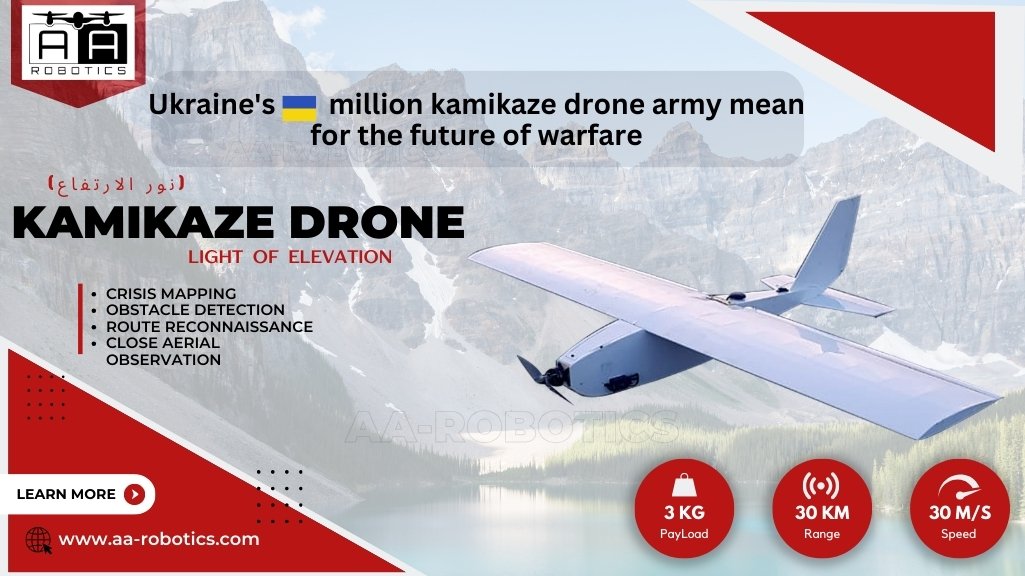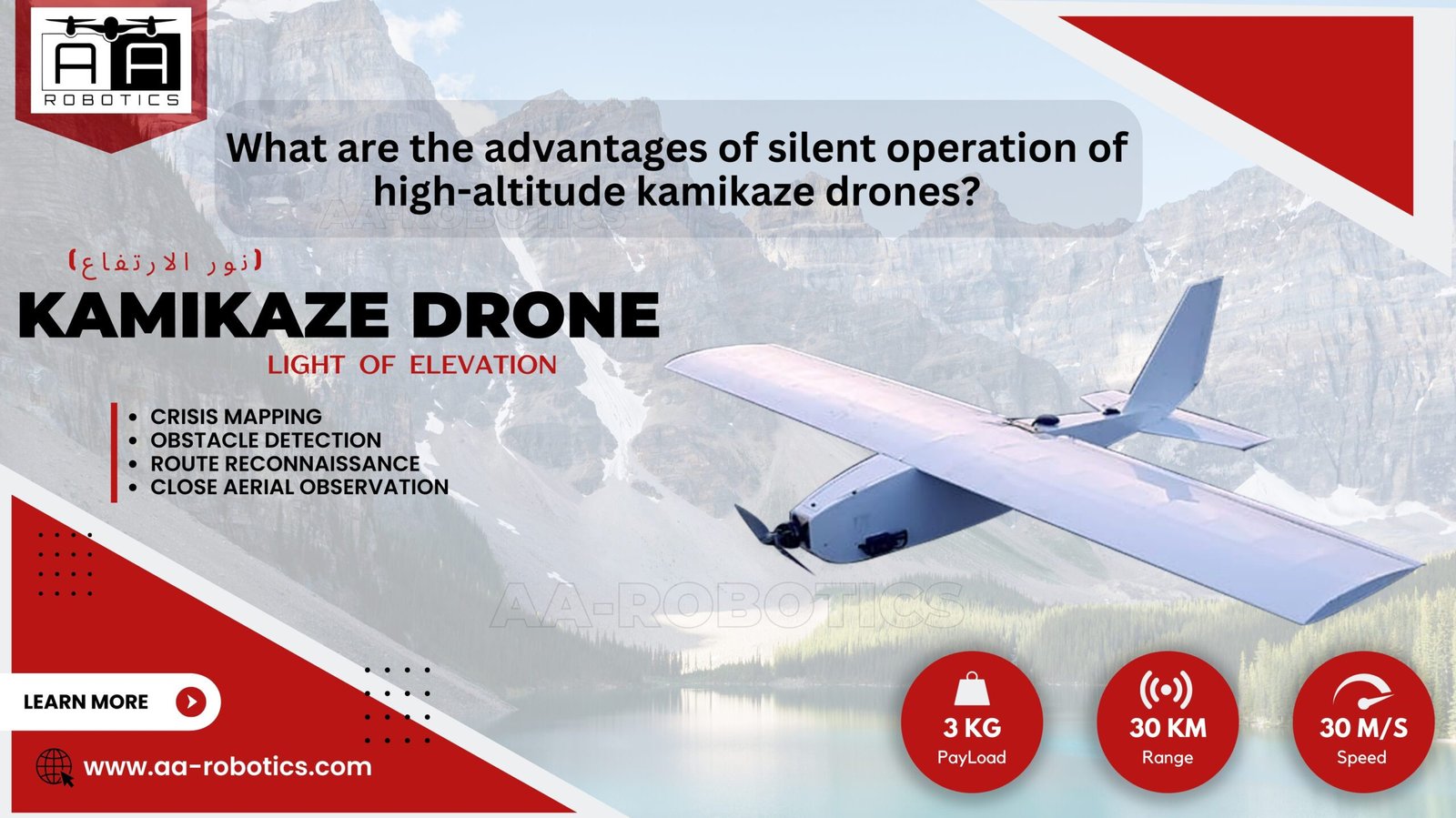
What does Ukraine’s million kamikaze drone army mean for the future of warfare?
Introduction:
The considerable use of unmanned aerial vehicles (UAVs) in the crisis in Ukraine provides a preview of a destiny. And in which Kamikaze drone technology becomes widely available and bendy, changing army techniques and requiring innovative countermeasures.
During the conflict in Ukraine, innovation has taken root in the field of unmanned aerial vehicles (UAV drones). Ukraine’s use of drone technology, especially smaller, disposable assault drones, has sparked debate about the long-term implications for armed conflicts. The widespread use of UAV drones raises concerns about accessibility, affordability, and the changing nature of armed conflicts.

What does Ukraine’s million kamikaze drone army mean for the future of warfare
A Novel Era of Easily Available Airpower:
Airpower has historically been the purview of properly funded armed forces with aircraft. The battle in Ukraine reveals a trade.Drones are now a vital weapon for Ukrainian forces. Kamikaze drones are a cheap alternative to traditional airpower. They’re made for one-way missions that destroy goals. Their relative accessibility and simplicity of utilisation lessen the entry hurdle for drone combat, which may truly democratise airpower.
On the battlefield, adaptability and innovation:
The conflict has also confirmed how flexible drone generation is. Drones have been used by Ukrainian troops for various purposes such as surveillance, reconnaissance, and targeting enemy positions. They have demonstrated the ability to adapt and evolve, combining modified and commercial elements to create a versatile arsenal. This suggests that drone design and deployment may rapidly increase as opposing forces seek innovative ways to use UAV drones.
Swarming the front strains: superior Precision and Lethality:
The sheer number of drones that Ukraine has deployed makes it possible to apply a swarming method, overpowering opponent defences with chronic assaults. Recognised by many as “kamikaze drones,” these loitering munitions may also hit objectives more precisely than conventional artillery, which might also lessen the wide variety of civilian casualties in urban regions. However, the prospect of unexpected repercussions and the loss of human control over vital choices in combat are raised by the lethality of those drones as well as their capability for self-sustaining operation.

What are the capabilities of kamikaze drones
Altering Approaches and Retaliatory Actions:
Effective countermeasures have to evolve in light of the growing occurrence of drone conflict. Kamikaze drone-searching technology and electronic battle (EW) equipment intended to jam drone control indicators will likely develop in significance. The defense force needs to adapt their procedures to address the ongoing risk posed by easily accessible, inexpensive drones. This may involve prioritizing personnel and equipment deployment and developing camouflage techniques to evade drone detection.
Moral Matters and the Human Price:
Worries about ethics are also raised by the sizable use of drones. It’s important to consider the potential for civilian casualties from drone strikes and the risk of exploitation by non-state actors or rogue regimes due to the ease of drone deployment. The need for international agreements and dialogue on the moral use of drones in combat will grow.
The Future of Combat: A Technological Mosaic:
Future conflicts are expected to involve a variety of technologies, including kamikaze drones or UAV drones operating in tandem with conventional weaponry, as evidenced by the continuing conflict in Ukraine. There’ll in all likelihood be continual squabbling over the manipulation of the airspace, making the battlefield a more dynamic and aggressive environment. Militia that can create robust countermeasures, contain drones in an efficient manner, and take care of moral problems will likely have a side.

High Altitude Kamikaze Drones Advantages of Silent Operation
Kamikaze Drones and Their Use in Civilian Applications: Beyond the Battlefield:
Warfare has expanded drone generation improvement, which has packages out of doors of the battlefield. Kamikaze drones or unmanned aerial vehicles, with their growing accessibility and cost, have the capability to completely remodel a number of non-military industries. Some of the many potential uses are search and rescue, infrastructure inspection, and agricultural tracking. The improvement of innovative and useful civilian drone applications can be sped up by the instructions received from the struggle in Ukraine.
A global situation: outcomes Exceeding Ukraine:
Truly, the classes determined in Ukraine will have an effect on how wars are conducted within the country. The Kamikaze drones’ achievement is drawing the eye of different countries, leading to concerns about drone proliferation. This calls for worldwide standards and global discussions on ethical drone use.
Without question, the warfare in Ukraine has acted as a catalyst for changes to the procedures of conflict. Drone utilisation is increasing, and using disposable assault drones, in particular, indicates that Navy policy may be changing. The fate of conflict may be shaped by advancing drone technology. The global community must promote responsible use, develop countermeasures, and explore drones’ potential for peaceful applications.
Stay updated with today’s trends in drone technology for the armed forces by using the following AA Robotics on our social media systems. Reach out to us on Facebook, Instagram, LinkedIn, YouTube, and different social media platforms to obtain distinctive content material, back-of-the-scenes insights, and updates on our ground-breaking drone and different unmanned aerial motors. We cordially encourage you to grow to be part of our network of fanatics, navy professionals, and development specialists when you have a hobby in the future of combat and drone generation. Visit AA Robotics now to find out about the drones utilized by the modern navy and their impact on global self-defense and safety techniques.



1 Comment
Willis
We absolutely love your blog and find many of your post’s to be just what I’m
looking for. Does one offer guest writers to write content for yourself?
I wouldn’t mind creating a post or elaborating on a number of the subjects you write concerning here.
Again, awesome blog!!